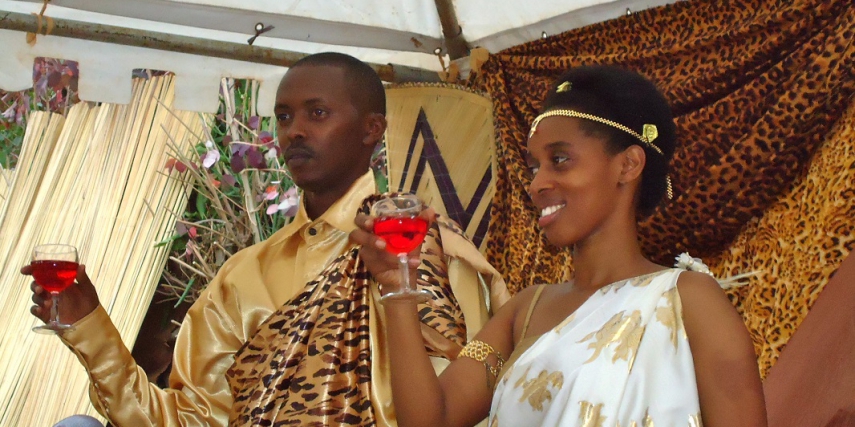Wedding traditions in Rwanda seems similar in many African regions with regards to spirit, but their tribes and ethnic groups are quite significant in details. Rwandan Wedding traditions has a strong significance in traditions because marriage links not only two people but also to their families and even the to the tribe they belong. Incorporating the customs and traditions in Rwandan wedding gives honor to their ancestors.
Wedding Traditions in Rwanda
However, aside from performing traditional rituals, couples can also use wedding symbols in ceremonial decorations and social status definitions. It is important that they understand the reason behind these traditions and the history of the traditions because this will enable couples to perform the traditions more sincerely.
 In Rwanda, marriage has two steps – the traditional wedding and the civil or church wedding. With the traditional wedding, the couple has to get the consent of parents to allow them get married, meanwhile, with the the church or civil wedding, this is when the man and woman are officially united in matrimony.
In Rwanda, marriage has two steps – the traditional wedding and the civil or church wedding. With the traditional wedding, the couple has to get the consent of parents to allow them get married, meanwhile, with the the church or civil wedding, this is when the man and woman are officially united in matrimony.
The Rwandan Traditional Wedding is the more colorful and feastive part. This part of the wedding starts with the preparation of the bride. The bride is taken to the salon to get dressed traditional wear of Kinyarwanda, or that which is commonly known as mushanan. The mushanan is designed out of a silk material well matched with a long wrap skirt in addition to a sash that covers the shoulder.
Most Rwandan woman love this attire.It is usually put on formal ceremony such as the weddings. The first wedding which is the traditional wedding is always held at an aunt’s residence. It is organized with tents, chairs along with a special tent for the bride that is designed with animal print material along with beautiful well decorated baskets and other handicraft.
The tents are set up opposite the different families to enable them get to know each other. The Rwandan Traditional Wedding ceremony starts with the heads of the different families in particular men went ahead to discuss why really their children would get married. Then, families are introduced. Then, the exchange of presents follows. After this, the groom is introduced by the aunt to the congregation which was followed with the giving of dowry to the girl’s parents.
Traditionally, marriage in Rwanda would be marked by the presentation of a dowry. The dowry can be in the form of cows or agricultural tools by the groom’s family to the bride’s family. This exchange served to recognise the bride’s family’s efforts in raising their daughter and preparing her for marriage.
After the dowry, the bride is processioned, escorted by women with gourds of milk that is to be given to the groom’s family. Along the procession are traditional dancers. Another part of tradition is that four spear men have to guard the bride. After that the bride and groom meet, they are ashed in their special tent which shows that the two are now ready to be married formally in church or civil matrimony.